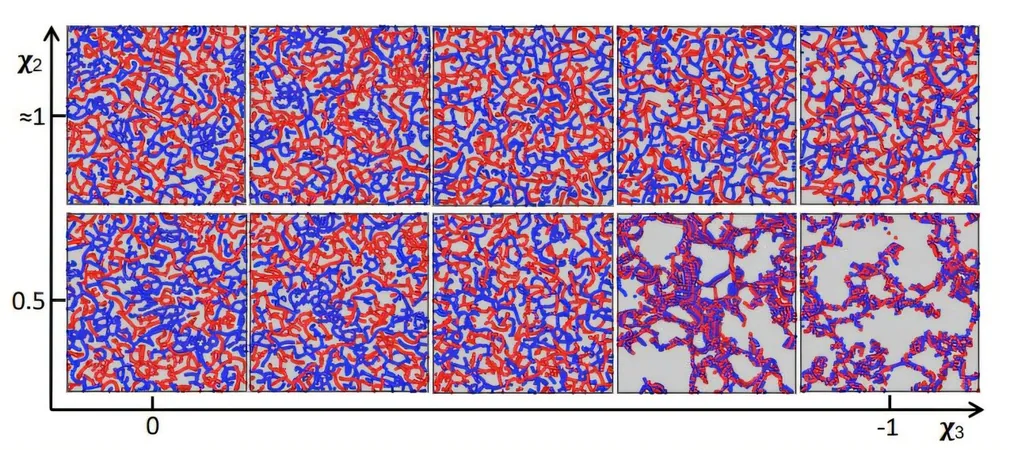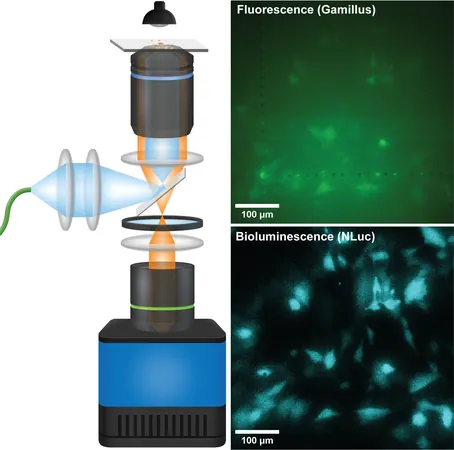
Unlocking the Future of Soft Materials: Programmable Double-Network Gels Revolutionize Engineering
2025-05-06
Author: Mei
A groundbreaking study has unveiled a game-changing approach to engineering soft materials, showcasing how fine-tuning the interactions between different network-forming species within a gel can lead to customizable structures and mechanical properties. This revelation draws inspiration from the intricate designs found in biological tissues.
Published in the *Proceedings of the National Academy of Sciences*, the research, titled "Inter-Species Interactions in Dual, Fibrous Gels Enable Control of Gel Structure and Rheology," dives deep into how adjusting the strength and configuration of interactions among two colloidal species affects network formation and rheological performance.
The researchers conducted simulations that highlighted the ability to separately manipulate interspecies stickiness and their propensity to bundle together. This fine control allowed them to determine whether the resulting networks remained distinct, overlapped, or intertwined.
Key Discoveries from the Study
1. **Tougher Materials with Less Stickiness**: Generally, reducing the stickiness between species results in tougher double-network materials. However, their resilience varies significantly based on the architecture of the networks.
2. **Reinforcement Through Bundling**: When networks tend to bundle, they interpenetrate, thereby enhancing their toughness.
3. **Design Principles for Resilient Materials**: The unique double-network structure itself becomes a design principle for creating materials that can either be made more resilient or more adaptable.
Importantly, this study demonstrates that these intertwined networks can be reprogrammed—gel structures can be reshaped even after they are formed by adjusting interspecies interactions. This opens exciting possibilities for creating materials that can change their mechanical properties in response to environmental stimuli.
Broader Implications for the Future
Beyond advancing our understanding of soft matter physics, these findings carry significant implications for various fields such as biomedicine, tissue engineering, soft robotics, and the development of smart materials. Innovative systems that mimic the cooperative behavior of biological networks could lead to synthetic materials that are not only versatile but also functionally superior.
What’s Next?
Future research will delve into turning these theoretical principles into practical applications within colloidal or polymeric systems. Scientists aim to explore how interspecies interactions can be harnessed to create materials that respond dynamically to changes in light, temperature, or chemical environments, paving the way for robust, adaptable synthetic materials.




 Brasil (PT)
Brasil (PT)
 Canada (EN)
Canada (EN)
 Chile (ES)
Chile (ES)
 Česko (CS)
Česko (CS)
 대한민국 (KO)
대한민국 (KO)
 España (ES)
España (ES)
 France (FR)
France (FR)
 Hong Kong (EN)
Hong Kong (EN)
 Italia (IT)
Italia (IT)
 日本 (JA)
日本 (JA)
 Magyarország (HU)
Magyarország (HU)
 Norge (NO)
Norge (NO)
 Polska (PL)
Polska (PL)
 Schweiz (DE)
Schweiz (DE)
 Singapore (EN)
Singapore (EN)
 Sverige (SV)
Sverige (SV)
 Suomi (FI)
Suomi (FI)
 Türkiye (TR)
Türkiye (TR)
 الإمارات العربية المتحدة (AR)
الإمارات العربية المتحدة (AR)